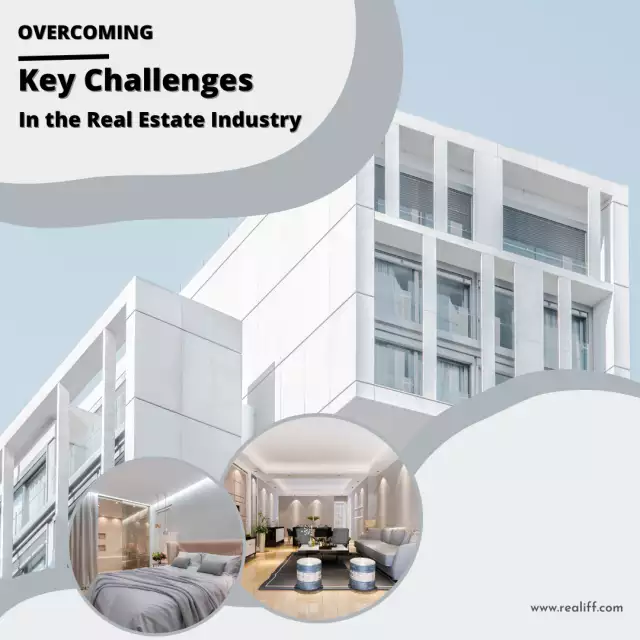The Impact of Changing Demographics on Housing Trends
Demographics play a significant role in shaping various aspects of society, and the housing market is no exception. As populations evolve, so do the preferences, needs, and priorities of individuals and households. In recent years, changing demographics have had a profound impact on housing trends , influencing everything from the types of homes being built to the locations that are in high demand. The aging population has driven a rise in demand for age-friendly housing and multigenerational living arrangements, while millennials' preferences have sparked a desire for rental properties in urban areas. The increasing cultural diversity has led to the development of housing options that cater to specific cultural needs, promoting inclusivity. Furthermore, the growing concern for sustainability has driven demand for eco-friendly housing options. The COVID-19 pandemic has accelerated remote work trends, leading to a desire for spacious homes in suburban or rural areas. These shifting demographics are transforming the housing market and have important implications for both buyers and developers. Buyers must consider their specific needs and preferences based on their life stage and cultural background, while developers need to adapt to meet the evolving demands of these diverse demographics. By understanding and responding to these changing demographics, the housing market can thrive and provide sustainable, inclusive communities for all.
Aging Population and Multigenerational Living
One notable Changing Demographics sign that is significantly impacting housing trends is the aging population. As societies experience longer life expectancies and advancements in healthcare, there has been a noticeable increase in the number of older adults seeking suitable housing options. This has led to a rise in demand for age-friendly housing that caters to the unique needs and preferences of seniors. Examples of age-friendly housing include single-story homes that eliminate the need for stairs, assisted living facilities that provide on-site care and support, and communities with amenities tailored to enhance the quality of life for older adults. Furthermore, the desire for multigenerational living arrangements has gained momentum as families look for ways to accommodate their elderly parents or adult children under one roof. Multigenerational living offers several benefits, including shared expenses, emotional support, and a sense of closeness among family members. In response to this growing trend, builders and developers are adapting their strategies by constructing homes with separate living spaces or expanding existing properties to accommodate multiple generations. This may include the addition of accessory dwelling units (ADUs) , known as granny flats or mother-in-law suites, that provide independent living quarters within the same property. These adaptations in housing options reflect the Changing Demographics and the recognition of the importance of intergenerational connections. By providing suitable housing solutions for an aging population and promoting multigenerational living, builders, and developers are addressing the evolving needs of families and fostering a sense of community and support. The impact of the aging population on housing trends is poised to continue shaping the market, with a greater emphasis on creating inclusive and age-friendly living environments that cater to the diverse needs of individuals and families across different generations.

Millennial Preferences and Urbanization Due to Changing Demographics
The influence of millennials, the largest generational cohort, on the housing market, cannot be overlooked. This generation has been faced with unique challenges, including financial constraints and changing preferences, which have led to a delay in homeownership . Millennials prioritize flexibility and seek housing options that align with their dynamic lifestyles. As a result, there has been a notable increase in the demand for rental properties, particularly in urban areas that offer a vibrant atmosphere, convenient access to amenities, and abundant employment opportunities. In response to this demand, developers have shifted their focus towards constructing rental apartments and mixed-use developments that cater specifically to the preferences and needs of millennials. These housing options often come equipped with modern amenities, such as communal spaces for socializing and networking, fitness centers, co-working areas, and even pet-friendly facilities. Furthermore, developers are keen on selecting locations that offer proximity to public transportation, reducing reliance on private vehicles, and promoting sustainable transportation alternatives. The emphasis on walkability and access to amenities, such as grocery stores, restaurants, and recreational spaces, adds to the appeal of urban living for millennials. The preferences of millennials have played a pivotal role in shaping urbanization trends, as they seek out vibrant and connected communities that offer a multitude of opportunities. By adapting to the needs of Changing Demographics, developers are able to create housing options that resonate with millennials' desires for flexibility, convenience, and a sense of community. The focus on rental apartments and mixed-use developments reflects the evolving housing preferences of millennials and their inclination towards urban areas as dynamic hubs of activity. The impact of millennial preferences on the housing market is expected to continue driving urbanization trends and influencing the types of housing options available to future generations.
Diversity and Cultural Influence
The impact of changing demographics on housing trends is not limited to generational preferences but extends to the increasing cultural diversity within communities. With heightened immigration and cultural exchange, different cultures bring forth their distinct housing preferences and requirements. These unique influences have given rise to a demand for housing features that cater to specific cultural practices and traditions. Developers and builders are recognizing the importance of creating inclusive communities that meet the cultural and religious needs of various populations. For example, in neighborhoods with diverse religious backgrounds, there is a growing demand for housing options that include prayer rooms or spaces that can be easily adapted to meet religious practices. In addition, multi-generational living is often valued in certain cultural traditions, prompting developers to incorporate flexible layouts that allow extended family members to reside together comfortably. Another area of focus is the design of kitchens, which are often considered the heart of the home. Different cultures have specific cooking traditions and preferences, leading to a demand for kitchen layouts and features tailored to those culinary practices. Developers are responding by offering customizable kitchen options that can accommodate diverse cooking styles and allow residents to feel at home while preparing meals that reflect their cultural heritage . By adapting to the cultural influences and diverse needs of communities, developers are fostering inclusivity and ensuring that housing options are accessible and appealing to individuals from various cultural backgrounds. These efforts promote a sense of belonging and cater to the demand for specialized amenities that enhance the quality of life for residents. As cultural diversity continues to shape our communities, the housing market's responsiveness to these influences will play a vital role in creating truly inclusive and culturally vibrant neighborhoods.
Environmental Consciousness and Sustainable Housing
The growing awareness and concern about climate change and sustainability are reshaping housing trends, thanks to the influence of changing demographics. Today, more and more individuals are prioritizing eco-friendly living and seeking housing options that align with their environmental values. This shift in preferences has sparked a surge in demand for sustainable and energy-efficient homes .Environmentally conscious buyers are actively seeking out properties that incorporate green building practices and sustainable features. These features may include energy-efficient appliances, solar panels, geothermal heating and cooling systems, and smart home technologies that optimize energy usage. Additionally, sustainable building materials such as recycled or reclaimed materials, low VOC paints, and sustainable insulation are gaining popularity as buyers prioritize eco-friendly options. In response to this demand, developers are embracing green building practices and implementing sustainable strategiesin new construction projects. Net-zero energy homes, which produce as much energy as they consume, are becoming more prevalent. These homes are designed with a focus on energy efficiency, utilizing renewable energy sources like solar power to generate electricity. Furthermore, new developments are incorporating eco-friendly infrastructure such as electric vehicle charging stations, bike-sharing programs, and green spaces to promote sustainable and active lifestyles. The influence of changing demographics on housing trends is driving the transformation towards environmentally conscious and sustainable housing options. By embracing green building practices and offering eco-friendly features, developers are meeting the demand for sustainable homes while contributing to a greener future. As the importance of environmental consciousness continues to grow, sustainable housing will remain at the forefront of housing trends, catering to the needs and values of individuals who prioritize both their comfort and the well-being of the planet.
Remote Work and Housing Preferences
The COVID-19 pandemic has brought about a significant transformation in the way we work, with remote work becoming the new norm for many individuals. As people have experienced the benefits of working from home, they have come to realize that proximity to their workplaces is no longer a primary concern. This realization has led to a shift in housing preferences, as individuals now seek more spacious homes in suburban or rural areas. The desire for larger living spaces has become paramount, as people prioritize creating dedicated home offices and flexible spaces that accommodate their work-from-home needs. The need for additional rooms or designated areas for work and productivity has emerged as a key consideration when searching for a new home. Moreover, access to outdoor amenities and a connection with nature has gained importance, as individuals seek a better work-life balance and spaces that provide opportunities for relaxation, exercise, and rejuvenation.
Unleashing Potential: The Thrilling Journey of Real Estate Development
In response to these Changing Demographics, developers are adapting their strategies and creating housing communities away from crowded city centers. These communities offer a tranquil environment, spacious homes, and access to nature, catering to the desire for a peaceful and rejuvenating living experience. Developers are also ensuring that these communities are equipped with reliable high-speed internet, recognizing the importance of seamless connectivity for remote work. The remote work trend has reshaped housing preferences, promoting a reimagining of the ideal living environment. The ability to work remotely has given individuals the freedom to choose where they live based on their lifestyle preferences rather than their proximity to traditional workplaces. As developers respond to this shift, they are creating housing options that provide individuals with the space, amenities, and connectivity necessary for a productive and fulfilling remote work experience. The remote work revolution has opened up new possibilities for individuals to live in locations that offer a better work-life balance and a greater connection to nature, transforming the way we view and choose our homes.
Realiff.com: The Ideal Platform to Use Changing Demographics and Its Impact!
In today's fast-paced digital era, online real estate platforms have revolutionized the way people buy and sell homes. One such platform that stands out from the crowd is Realiff.com.Realiff.com is an innovative online real estate platform that offers a seamless and user-friendly experience for individuals looking to buy or sell properties. With its unique features, including rebates and up to 2% cashback, Realiff.com has become an attractive choice for those seeking to make the most of their real estate transactions, regardless of Changing Demographics and trends.
Comprehensive Property Listings
Realiff.com boasts an extensive database of property listings, ensuring that buyers have a wide range of options to choose from. Whether you're looking for a cozy apartment, a suburban family home, or a luxury villa, Realiff.com has you covered. The platform allows users to filter listings based on location, price range, property type, and specific features, making it easier to find the perfect home that matches their requirements.

Up-to-Date Market Information
Staying informed about the current market conditions and trends is crucial when making real estate decisions. Realiff.com provides users with up-to-date market information, including data on property prices, market trends, and local insights. This information empowers buyers and sellers to make informed decisions and negotiate effectively.
Rebates and Cashback Offers
One of the standout features of Realiff.com is its rebate and cashback program. When buyers purchase a property through the platform, they can receive a rebate, which can amount to substantial savings. Additionally, Realiff.com offers up to 2%cashback, which is a significant incentive for both buyers and sellers. These financial benefits make Realiff.com an attractive choice for individuals looking to maximize their returns or save money during the buying or selling process.
User-Friendly Interface
Realiff.com prioritizes user experience, providing a user-friendly interface that makes navigating the platform intuitive and straightforward. The platform's design and layout are clean, organized, and visually appealing. Users can easily browse property listings, view high-quality images, access detailed property information, and communicate with sellers or agents seamlessly. The intuitive interface ensures a smooth experience for both buyers and sellers throughout their real estate journey.
What are the potential drawbacks of real estate rebates
Trusted Network of Professionals
Realiff.com has a network of trusted real estate professionals , including agents, brokers, and mortgage providers. These professionals undergo a rigorous vetting process to ensure they meet high standards of expertise and professionalism. Buyers and sellers can connect with these professionals to seek guidance, assistance, and expert advice throughout the buying or selling process. Having access to a reliable network of professionals adds an extra layer of trust and confidence for users of the platform.
Conclusion
The impact of changing demographics on housing trends is undeniable, as it shapes the very fabric of the housing market. The aging population's demand for age-friendly housing and multigenerational living arrangements, combined with millennials' preferences for urban rental properties, are just some of the factors driving the transformation. Cultural diversity has brought about the need for housing options that cater to specific cultural and religious needs, fostering inclusivity. Furthermore, the increasing emphasis on sustainability has led to a surge in demand for eco-friendly homes. The COVID-19 pandemic has accelerated remote work trends, resulting in a desire for spacious homes in suburban or rural areas. To thrive in this dynamic landscape, developers, builders, and policymakers must remain attentive to the changing demographics and adapt their strategies accordingly. By understanding and addressing the evolving needs and preferences of diverse populations, they can create sustainable and inclusive communities that meet the demands of the future. The housing market holds the potential to shape society and enhance the quality of life for all individuals, and embracing the impact of changing demographics is key to realizing this vision.
Why Experiencing the Neighborhood is Essential Before Buying a House






